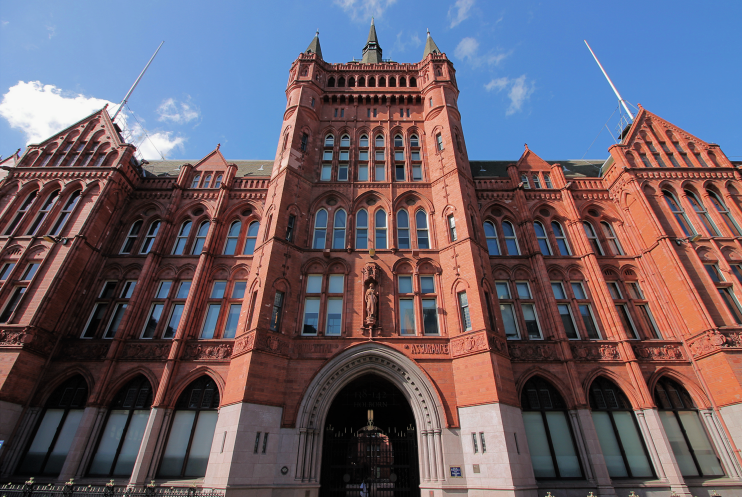Holborn
Holborn, Camden/City
A former metropolitan borough and an office-dominated street running eastward from the north-east corner of Covent Garden towards Smithfield

An early settlement evolved on the edge of the City beside a ‘hole bourne’ or stream in a hollow, at the far right of the map below. The stream became known as the River Fleet and was later covered by Farringdon Street and Farringdon Road. The depth at which that route runs beneath Holborn Viaduct gives an idea of quite how hollow the valley was.
The road now called Holborn (Holborn Viaduct east of Holborn Circus and High Holborn west of Gray’s Inn Road) was in existence as Holeburnestreete by 1249.
Holborn developed as a medieval suburb of the City, with houses that steadily increased in impressiveness over time. The Bishop of Ely built a palatial town house at present-day Ely Place, where its 13th-century chapel, dedicated to St Etheldreda, survives today. The bishop’s garden was noted for its strawberries and, in Richard III, Shakespeare has the Duke of Gloucester say, “My lord of Ely, when I was last in Holborn / I saw good strawberries in your garden there / I do beseech you send for some of them.”
Several lawyers’ colleges were established hereabouts, some later evolving into barristers’ colonies while others withered and died. Staple Inn was among the departed but its 16th-century timber-framed frontage remains. Gray’s Inn to the north of the street and Lincoln’s Inn to the south have prospered and expanded.
In the mid-1860s houses in the eastern part of Holborn were demolished for the construction of Holborn Viaduct, which was opened by Queen Victoria in 1869. From that time until the present day Holborn has been progressively redeveloped with hefty office blocks. By far the most exquisite is the terracotta fortress of Holborn Bars (shown above), built for the Prudential Assurance Company by Sir Alfred Waterhouse and his son Paul over the last quarter of the 19th century. It’s now De Vere Holborn Bars.
Prudential’s rival the Pearl Assurance Company also chose Holborn for its headquarters, which was built in several stages over several decades, beginning in 1912. The building is now Rosewood London, a luxury hotel with a well-reviewed restaurant.
Later commercial premises on Holborn and High Holborn mostly incorporated shops and service providers at street level.
In 1955 the six-way junction at Holborn Circus became the site of the offices and printing works of the Mirror newspaper group, now replaced by Sainsbury’s headquarters. The centre of the circus is graced by the Prince Albert Monument (which should not, of course, be confused with the Albert Memorial).
The zone of redevelopment focused on the junction of High Holborn and Procter Street (and extending way beyond that, according to certain interested parties) is nowadays sometimes called Midtown, although this trend seems to be receding.
Holborn was renowned for its medieval inns, all of which have either disappeared or been rebuilt. The long and narrow Cittie of Yorke pub dates from 1924 but parts of its barn-like interior are older.
